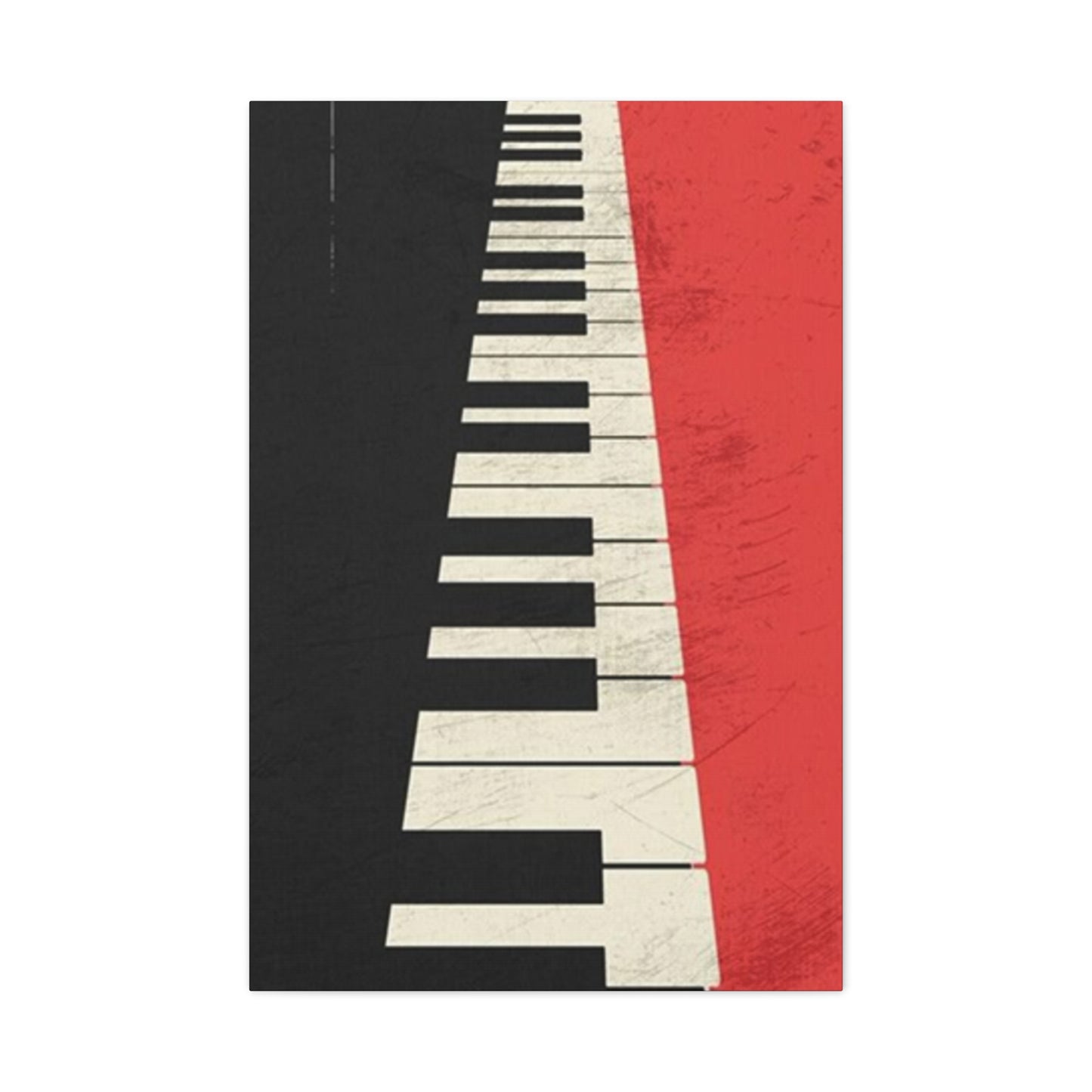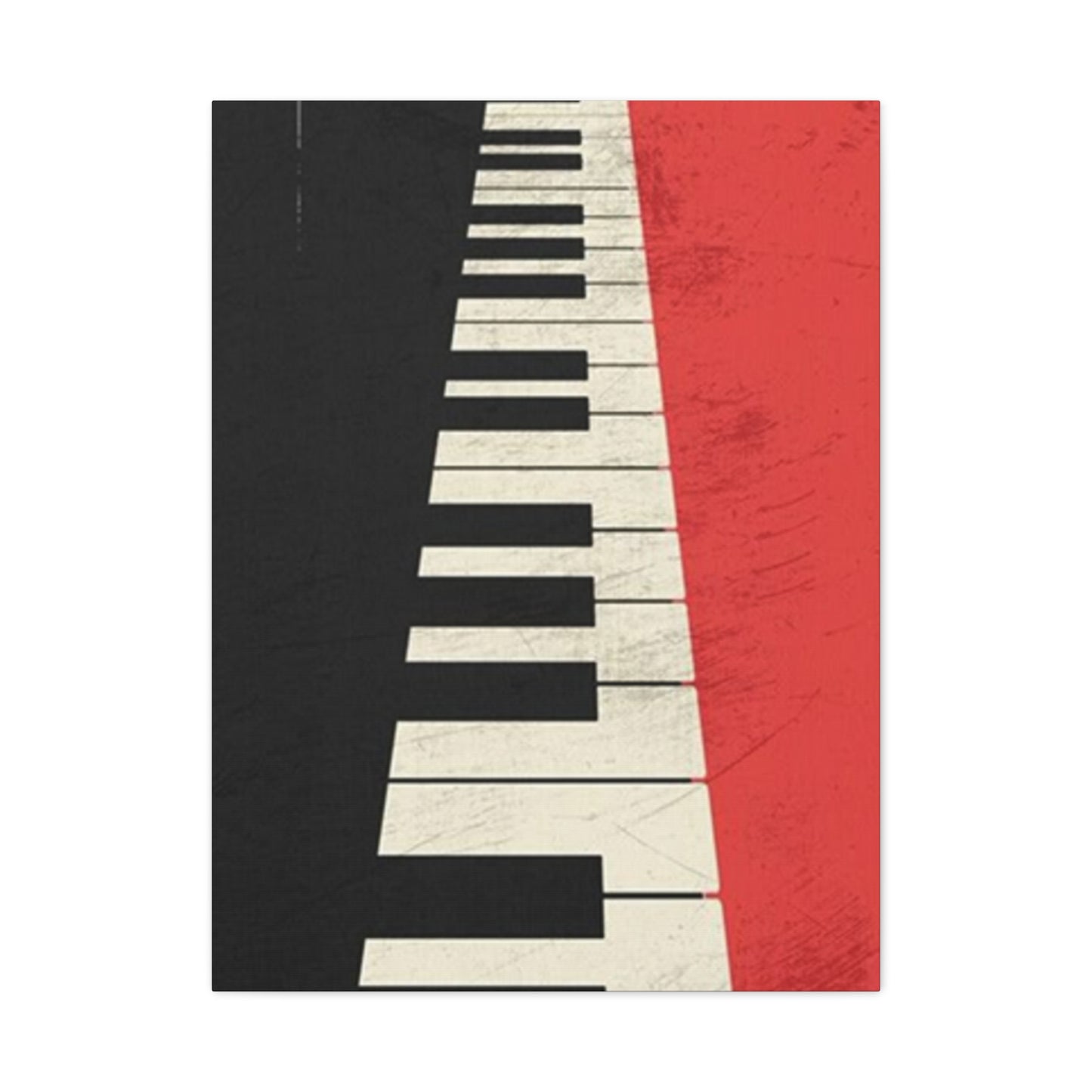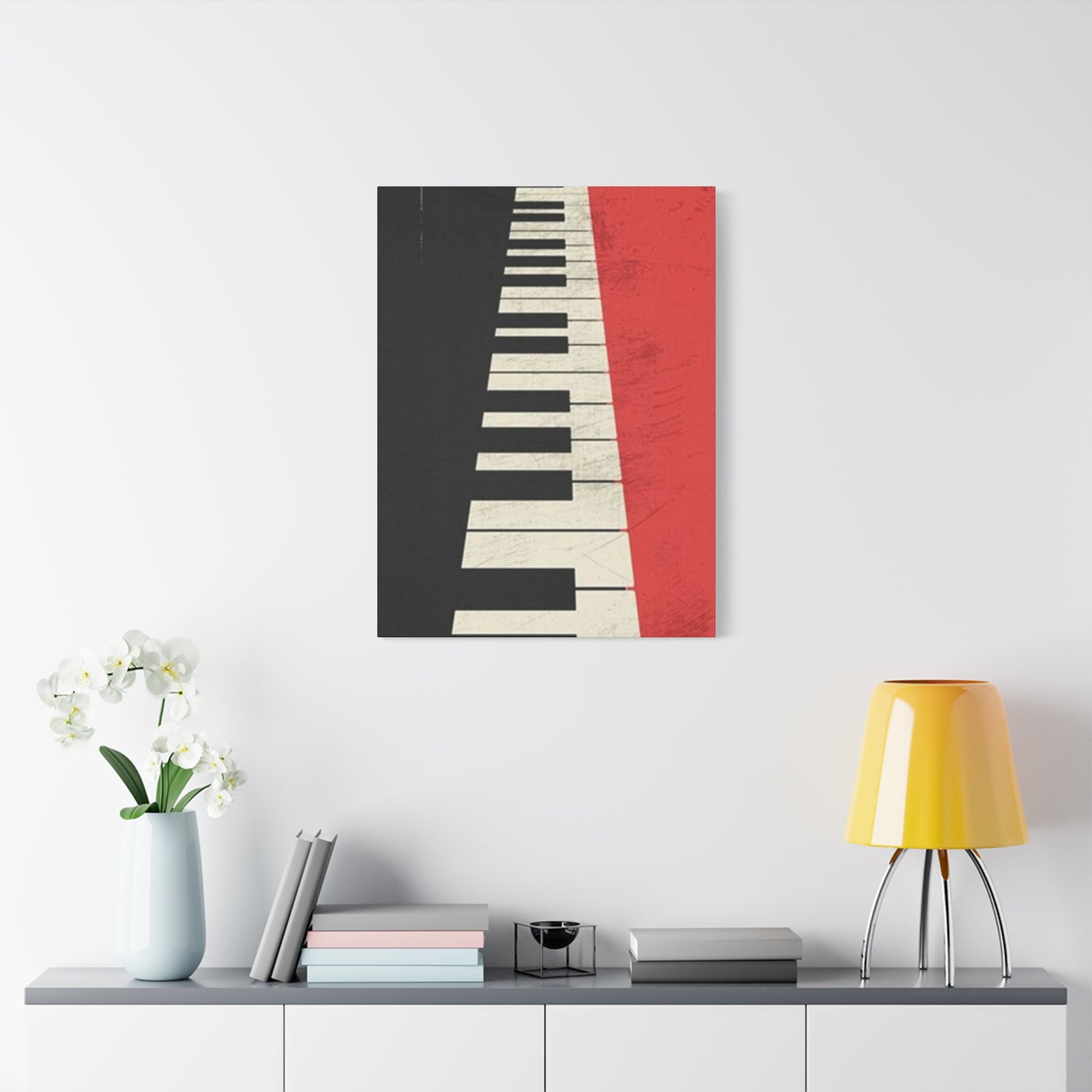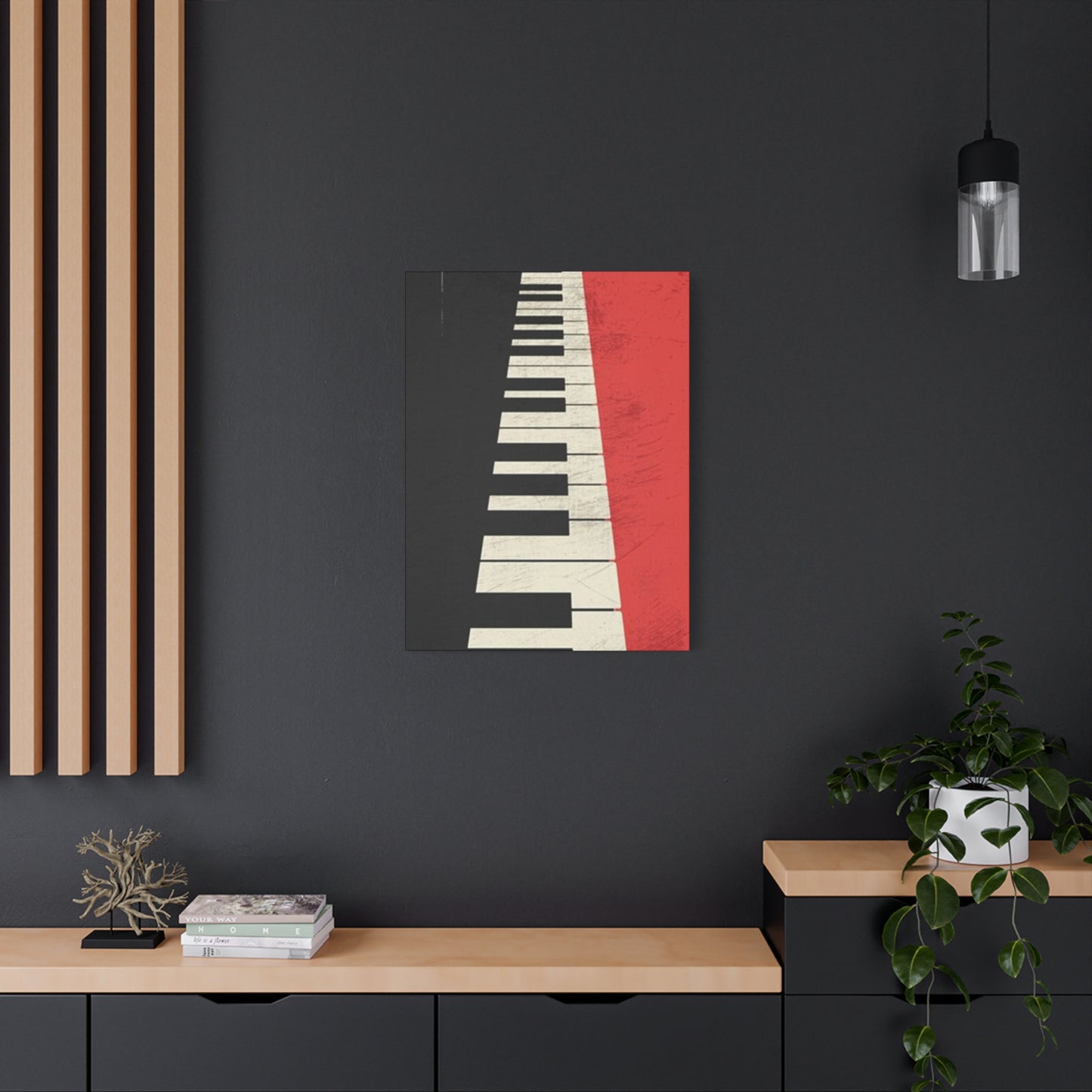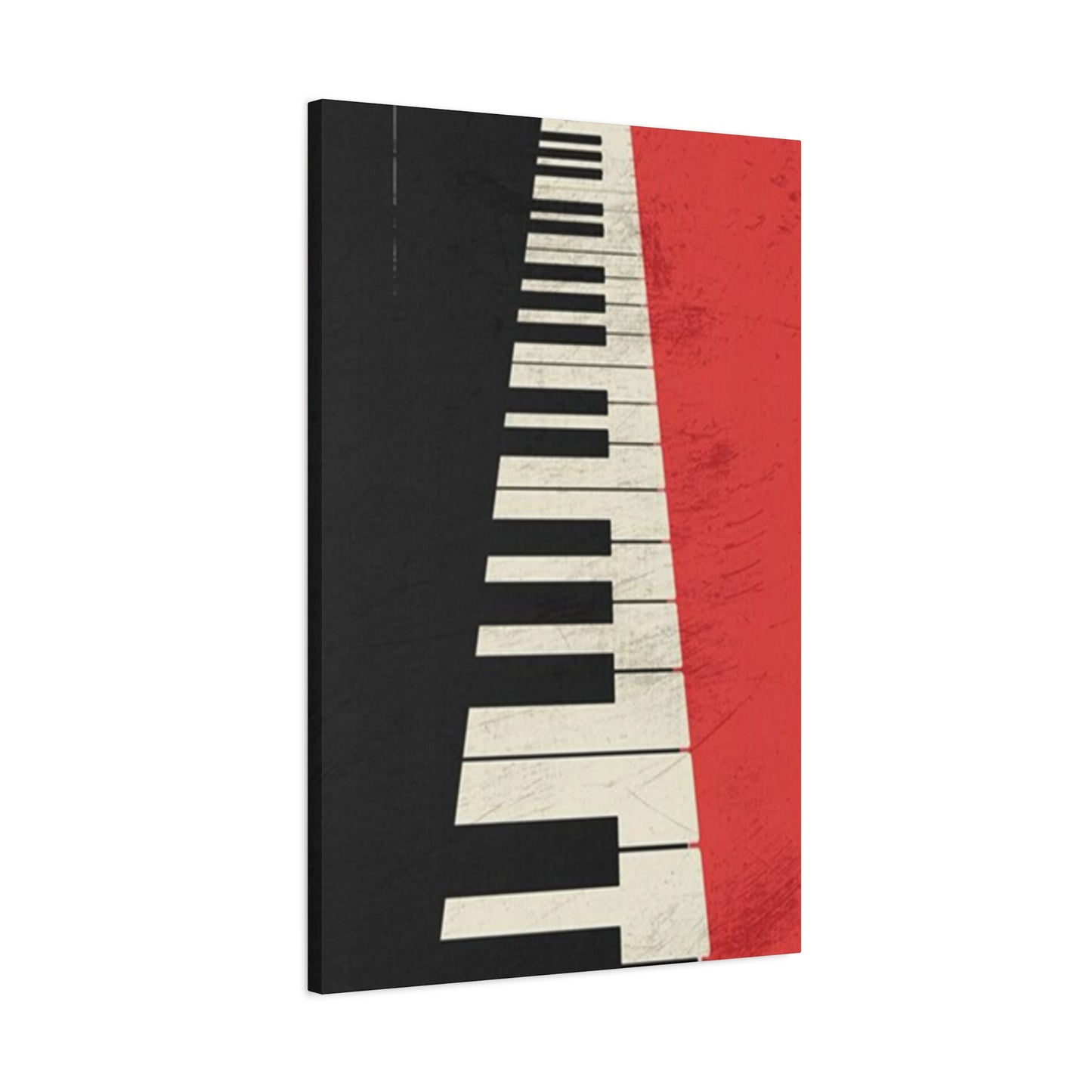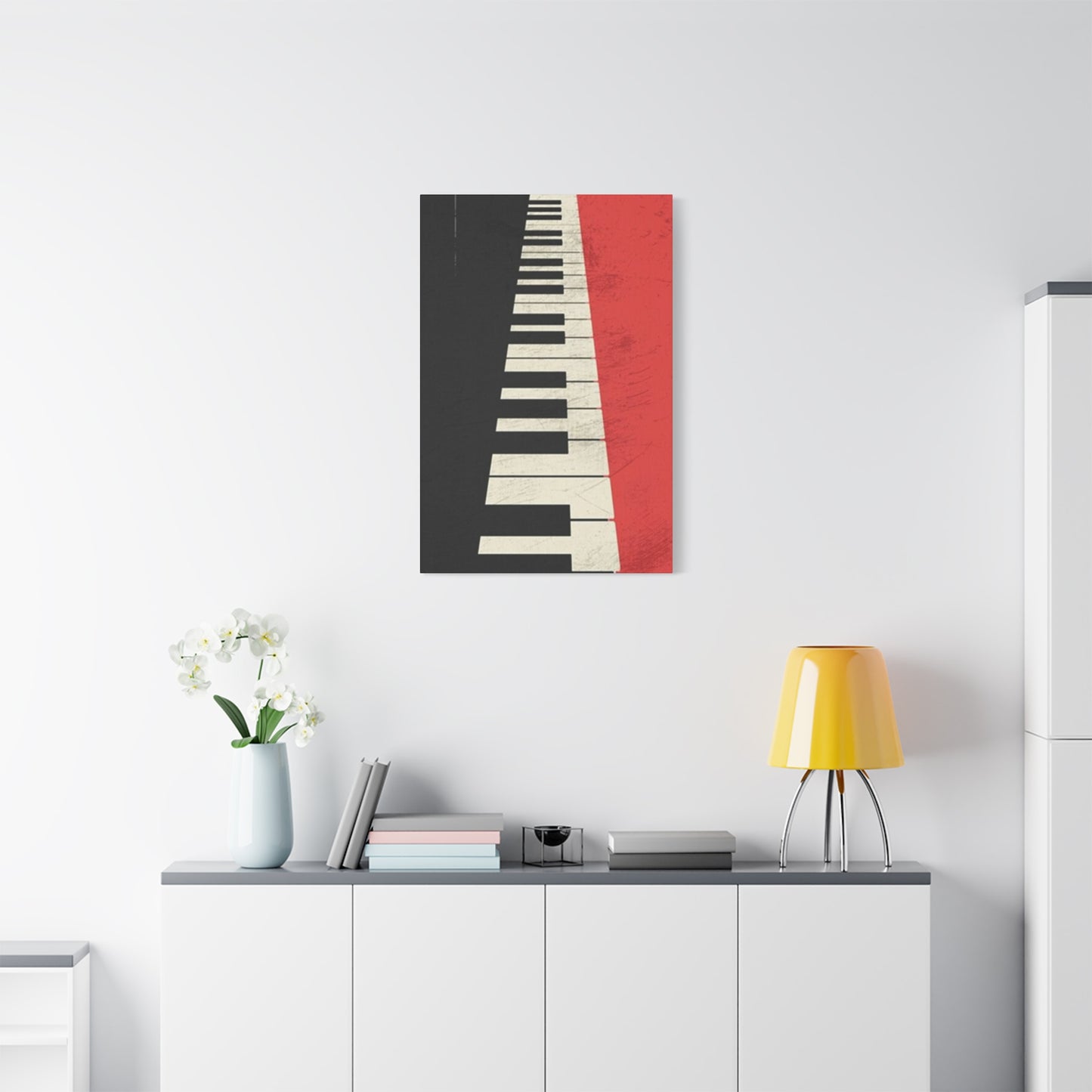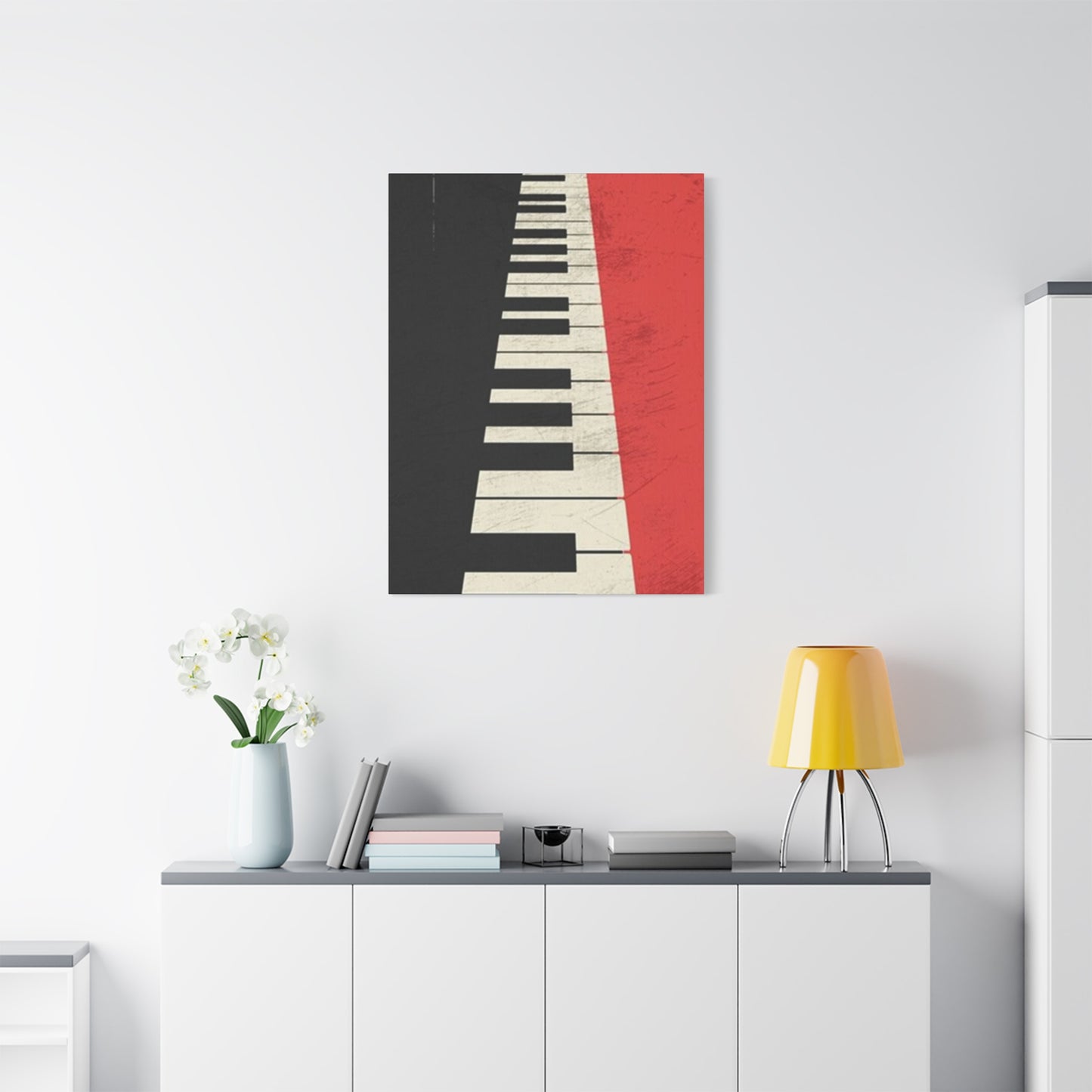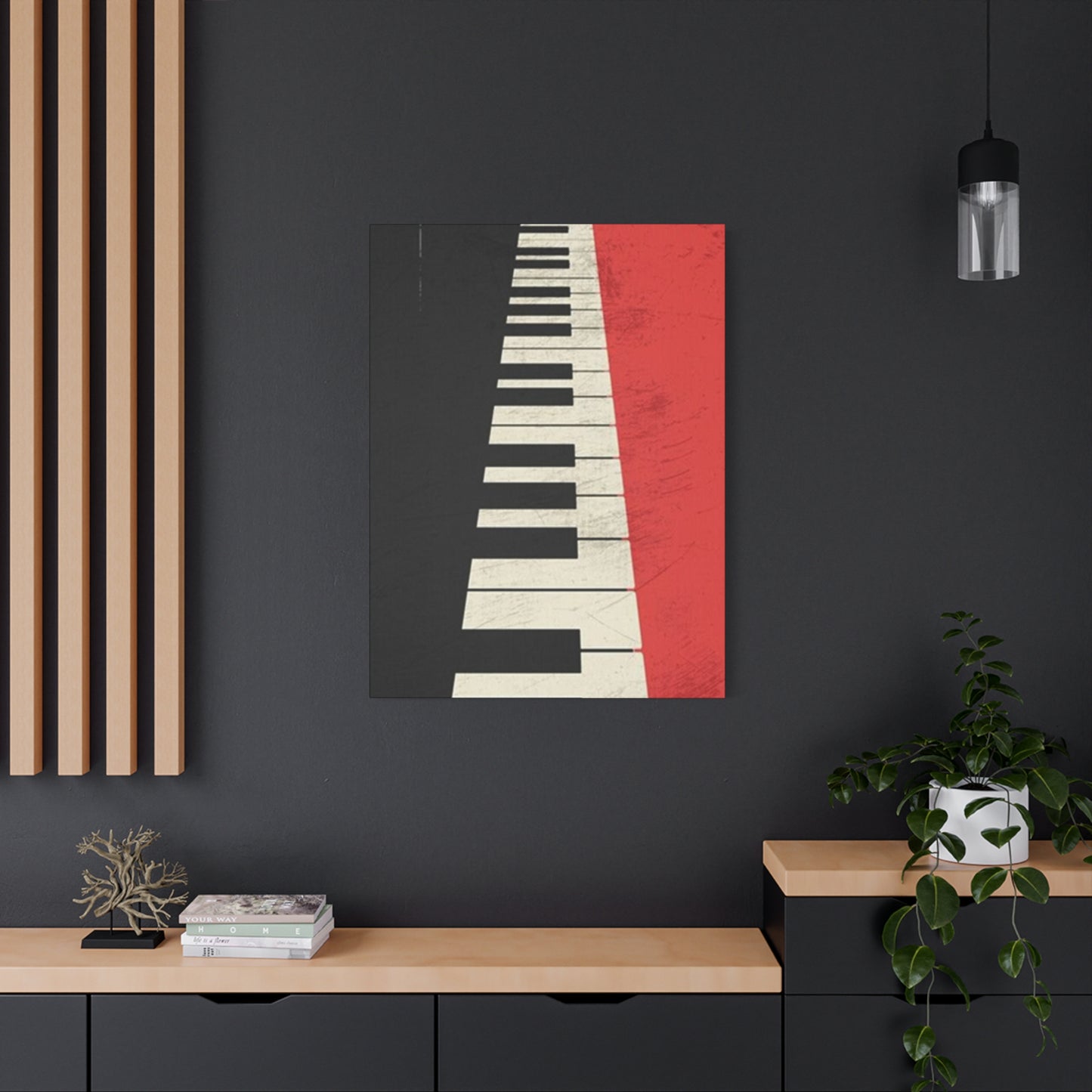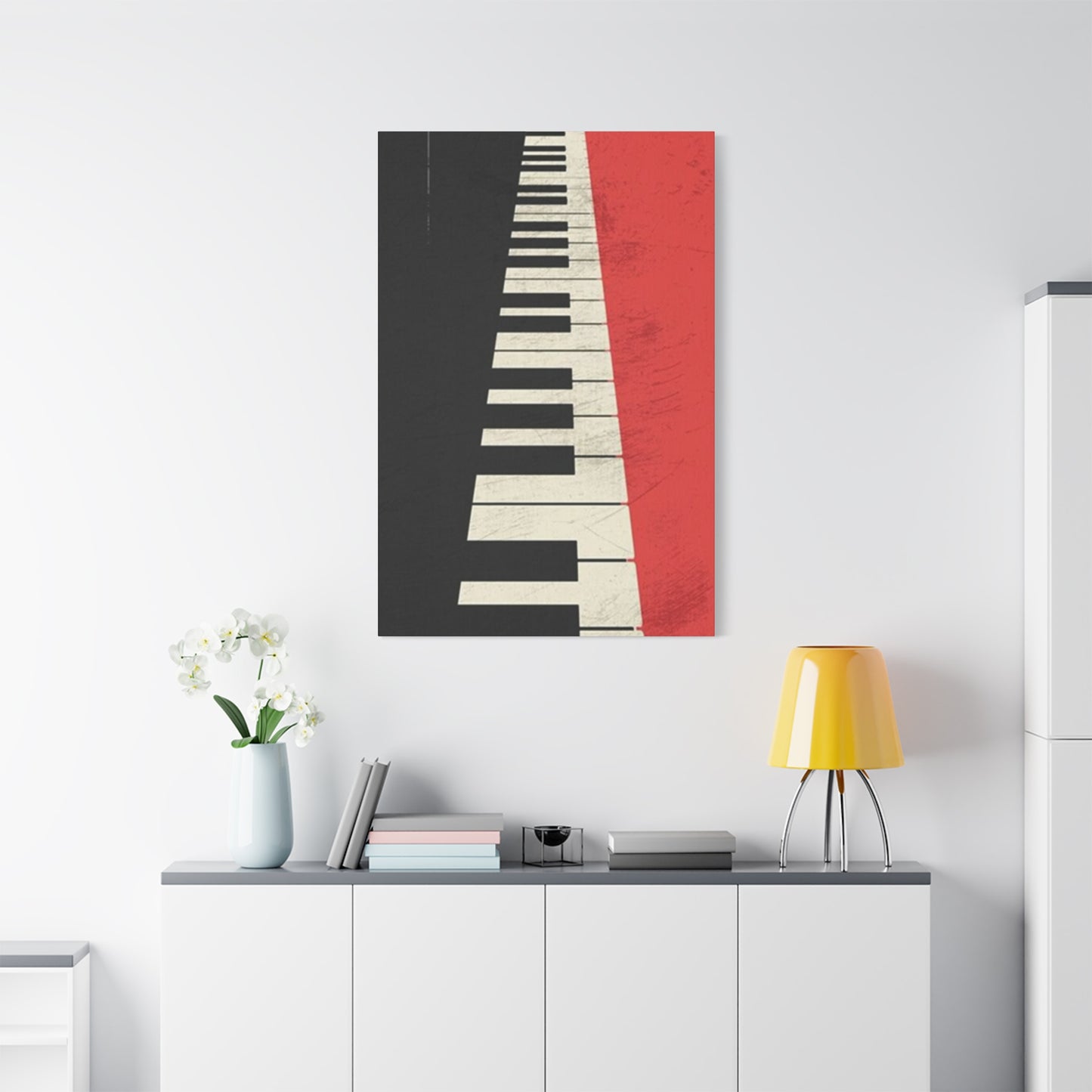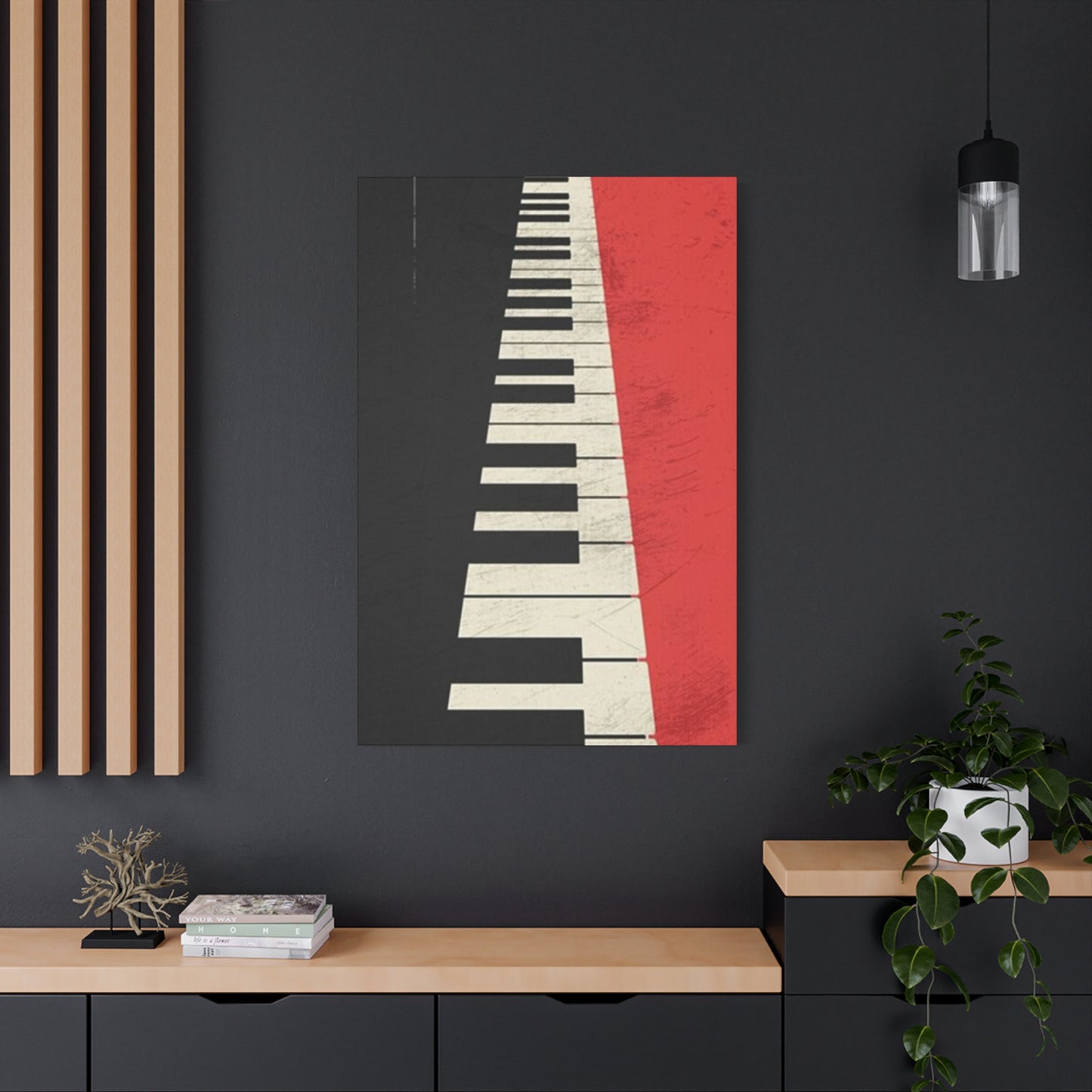Black And Red Piano Wall Art & Canvas Prints
Black And Red Piano Wall Art & Canvas Prints
Couldn't load pickup availability
Sophisticated Black and Red Piano Wall Art: A Beautiful Way to Elevate Your Living Space with Musical Flair
The allure of musical instruments transcends their auditory appeal, manifesting beautifully in visual representations that captivate homeowners and interior enthusiasts alike. Black and red piano wall art has emerged as a sophisticated choice for those seeking to infuse their living quarters with artistic refinement and melodic charm. This decorative approach combines the timeless elegance of one of humanity's most beloved instruments with bold color contrasts that command attention without overwhelming the senses.
The Magnetic Appeal Of Musical Instrument Imagery In Contemporary Home Decor
Musical instruments have long served as symbols of sophistication, creativity, and cultural refinement. When translated into visual artwork, particularly featuring pianos, these representations carry an inherent elegance that few other subjects can match. The piano itself represents centuries of musical evolution, embodying both classical tradition and modern innovation in its design and cultural significance.
The aesthetic power of piano imagery stems from multiple factors. First, the instrument's geometric lines and curves create natural visual interest, with keys offering striking patterns that artists can manipulate for dramatic effect. Second, pianos evoke immediate emotional responses, triggering memories of performances, personal musical experiences, or cultural moments that shaped individual perspectives. Third, the instrument's association with both formal concert halls and intimate home gatherings makes it universally relatable yet aspirational.
When rendered in black and red specifically, piano wall art taps into powerful color psychology. Black represents sophistication, mystery, and timeless elegance, while red introduces passion, energy, and emotional intensity. This chromatic pairing creates tension and harmony simultaneously, making spaces feel both grounded and dynamic. The contrast between these hues enhances visual impact, ensuring the artwork commands attention without requiring elaborate frames or excessive wall space.
Contemporary interior designers increasingly recognize the versatility of musical themes in residential and commercial spaces. Unlike trend-dependent motifs that quickly feel dated, musical imagery maintains relevance across decades and design movements. A well-executed piece featuring black and red piano wall art can complement mid-century modern aesthetics, industrial lofts, traditional parlors, or minimalist apartments with equal effectiveness.
Color Theory Fundamentals Behind Black And Red Piano Wall Art Combinations
Understanding the psychological and visual dynamics of color combinations illuminates why black and red piano wall art achieves such compelling results. Color theory provides frameworks for comprehending how different hues interact, influence mood, and shape spatial perception.
Black functions as an achromatic color that absorbs light rather than reflecting specific wavelengths. In design contexts, black provides weight, definition, and sophistication. When applied to piano representations, black enhances the instrument's inherent elegance while emphasizing its structural elements. The color's neutrality allows it to serve as both primary subject matter and supporting background, depending on compositional choices.
Red operates at the opposite end of the chromatic spectrum, registering as the longest visible wavelength and consequently demanding immediate visual attention. Physiologically, red increases heart rate and stimulates neural activity, creating sensations of excitement and urgency. In artistic contexts, red introduces warmth, passion, and vitality that counterbalances black's cool reserve.
The juxtaposition of these chromatic opposites creates what color theorists term "complementary contrast," though technically, red's true complement is green. Nevertheless, the black-red pairing achieves similar visual tension through value contrast rather than hue opposition. This relationship ensures that neither color dominates completely, instead establishing a dynamic equilibrium that sustains visual interest over extended viewing periods.
Cultural associations further enrich this color combination's significance. Black pianos represent formality and classical tradition, evoking concert halls and prestigious performance venues. Red introduces rebellious energy, suggesting jazz clubs, contemporary compositions, or passionate musical expression. Together, they bridge traditional and modern sensibilities, making the artwork accessible to diverse aesthetic preferences.
The chromatic intensity of red also provides opportunities for gradation and variation. Artists might employ crimson, scarlet, burgundy, or vermillion shades, each carrying distinct emotional connotations. Darker reds lean toward sophistication and restraint, while brighter variations emphasize energy and playfulness. These subtle variations allow homeowners to select pieces that precisely match their desired atmospheric qualities.
Spatial perception responds dramatically to these color choices. Dark colors typically recede visually, making walls appear farther away, while warm colors advance toward viewers. Black and red piano wall art can therefore manipulate apparent room dimensions, creating focal points that draw eyes inward or expand perceived space depending on compositional arrangements.
Diverse Artistic Styles Featuring Black And Red Piano Wall Art Representations
The versatility of piano imagery permits interpretation through countless artistic movements and stylistic approaches. Each methodology brings distinct visual characteristics and emotional resonances, allowing collectors to select pieces that align with personal preferences and existing decor.
Abstract expressionism offers one compelling approach, fragmenting piano forms into gestural marks, splattered pigments, and energetic brushstrokes. These representations prioritize emotional impact over literal accuracy, suggesting musical energy through visual dynamism. Black might appear as bold slashes across canvases, while red splatters evoke passionate crescendos. This style particularly suits contemporary spaces that embrace artistic boldness and unconventional aesthetics.
Photorealistic renderings provide opposite extremes, meticulously capturing every detail of piano construction with technical precision. These works showcase the instrument's mechanical complexity, highlighting hammers, strings, keys, and pedals with documentary accuracy. When executed in black and red, photorealism can isolate specific elements—perhaps focusing exclusively on keys with strategic red accents—creating compositions that balance technical mastery with selective color emphasis.
Minimalist interpretations reduce piano forms to essential geometric components, stripping away decorative elements to reveal underlying structural beauty. Clean lines, simplified shapes, and restrained color application characterize this approach. A minimalist black and red piano wall art piece might feature nothing more than horizontal key patterns against solid backgrounds, relying on compositional balance rather than ornate detail for visual impact.
Cubist methodologies fragment piano forms across multiple perspectives simultaneously, presenting various viewing angles within single compositions. This approach, pioneered by early twentieth-century modernists, challenges conventional spatial representation while maintaining recognizable subject matter. Black and red cubist piano pieces might overlay side views, top-down perspectives, and internal mechanisms, creating intellectually engaging puzzles that reward sustained contemplation.
Pop art sensibilities transform pianos into bold graphic statements, often incorporating commercial imagery techniques, repetition, and high-contrast color fields. These works might replicate piano silhouettes across grid patterns, apply halftone screening effects, or juxtapose instrument imagery with text elements. The style's inherent accessibility and visual punch make it particularly suitable for social spaces designed to stimulate conversation and engagement.
Impressionistic approaches capture pianos through loose brushwork and atmospheric color blending, emphasizing light effects and emotional mood over precise detail. These softer representations might show pianos dissolving into red-tinted backgrounds or emerging from black shadows, creating dreamlike qualities that evoke musical memories and nostalgic sentiments.
Contemporary digital art pushes boundaries further, incorporating mixed media elements, photographic manipulation, metallic accents, and three-dimensional effects. Digital artists can layer textures, experiment with transparency, and combine multiple source materials, producing hybrid works that blur distinctions between photography, painting, and graphic design.
Material Considerations For Black And Red Piano Wall Art Displays
The physical substrate and production methods significantly influence artwork appearance, longevity, and appropriateness for different environments. Understanding material options empowers informed selection decisions that align with practical requirements and aesthetic goals.
Canvas remains the most traditional choice for painted artwork, offering texture that enhances brush-based compositions while maintaining flexibility for various sizes. Gallery-wrapped canvas, where printed or painted material extends around frame edges, eliminates need for additional framing and creates contemporary presentation aesthetics. Canvas accepts diverse media, including oils, acrylics, and digital prints, making it adaptable across artistic styles.
Metal prints have gained substantial popularity for modern interiors, particularly for photographic and graphic representations. The printing process infuses dyes directly into specially coated aluminum sheets, creating luminous colors with exceptional depth and vibrancy. Metal surfaces resist fading, moisture, and physical damage better than paper or canvas, making them ideal for high-traffic areas or spaces with environmental challenges. The material's inherent sheen enhances black tones' richness while making red elements appear particularly vivid.
Acrylic glass printing produces stunning visual impact through transparency and dimensional depth. This method sandwiches printed images between clear acrylic layers, creating glossy surfaces with remarkable color saturation. Light passes through multiple layers, generating luminosity that traditional prints cannot match. Acrylic presentations suit contemporary spaces with abundant natural light, as illumination enhances their visual properties throughout the day.
Wood-mounted prints combine rustic charm with artistic imagery, transferring designs onto wooden planks or panels. This approach introduces organic texture and warmth that complement both traditional and farmhouse-inspired interiors. Wood surfaces add dimensionality and tactile interest, creating conversation pieces that engage multiple senses.
Framed paper prints offer economical versatility while maintaining high quality when produced with archival materials. Museum-grade papers resist yellowing and deterioration, ensuring longevity comparable to more expensive options. Framing choices dramatically influence final appearance, with options ranging from sleek metallic borders to ornate gilded designs depending on desired aesthetic effects.
Textured media like embossed papers, canvas with applied gel mediums, or mixed-media constructions add physical dimension that engages viewers beyond purely visual levels. These tactile elements create shadows and highlights that shift with changing light conditions, ensuring artwork appears dynamic throughout the day.
Gallery-quality reproductions using giclée printing methods deliver exceptional color accuracy and detail resolution. This archival process employs specialized inkjet printers with expanded color gamuts, producing prints that rival original paintings in visual fidelity. Giclée prints on canvas or fine art papers offer collectors museum-quality pieces at accessible price points.
Strategic Placement Guidelines For Maximizing Black And Red Piano Wall Art Impact
Artwork placement profoundly influences both piece visibility and overall room cohesion. Strategic positioning ensures black and red piano wall art achieves maximum aesthetic impact while supporting broader design objectives.
Vertical positioning typically follows the sixty-inch centerline rule, placing artwork centers approximately sixty inches above floor level. This standard aligns with average human eye height, ensuring comfortable viewing without neck strain. However, furniture placement may necessitate adjustments. Above sofas, artwork should hang four to eight inches above cushion backs, maintaining visual connection between seating and wall displays.
Horizontal spacing requires equal consideration. Centered placement above furniture creates symmetrical balance, while off-center positioning introduces asymmetrical dynamism that suits eclectic interiors. Multiple pieces benefit from consistent spacing, typically two to four inches between frames, creating unified installations rather than scattered collections.
Lighting dramatically affects how colors appear and how effectively artwork commands attention. Natural light presents challenges, as direct sunlight causes fading and color distortion over time. Positioning pieces perpendicular to windows minimizes light damage while ensuring adequate illumination. Artificial lighting offers greater control, with picture lights, track systems, or recessed fixtures providing focused illumination that enhances color vibrancy without introducing glare.
Room function influences appropriate placement choices. Formal living areas benefit from commanding focal pieces that anchor conversation areas and establish refined atmospheres. Music rooms or studios naturally accommodate piano imagery, creating thematic cohesion that reinforces space function. Bedrooms suit more contemplative compositions that promote relaxation rather than visual excitement.
Wall color interactions determine whether artwork harmonizes with or contrasts against backgrounds. Light neutral walls—whites, beiges, grays—provide clean backdrops that allow black and red piano wall art to dominate visually. Dark walls create moody environments where black elements may recede while red components gain additional intensity. Colored walls require careful consideration to avoid chromatic clashes or visual confusion.
Architectural features offer natural placement opportunities. Walls flanking fireplaces create symmetrical niches ideal for paired pieces. Stairwell walls accommodate vertical arrangements that guide visual movement upward. Alcoves and recessed spaces benefit from artwork that fills voids without appearing cramped.
Furniture relationships require thoughtful coordination. Artwork widths should ideally span two-thirds to three-quarters of underlying furniture widths, maintaining visual proportion. Tall narrow pieces suit walls beside bookcases or cabinets, while horizontal compositions work above long console tables or buffets.
Traffic patterns influence both safety and visibility. Avoid placing valuable artwork in high-contact zones where accidental damage becomes likely. Conversely, ensure pieces receive adequate visual exposure rather than hiding them in seldom-visited corners.
Scale relationships between artwork, walls, and rooms prevent either overwhelming small spaces or losing pieces in expansive areas. Large rooms with high ceilings accommodate oversized statement pieces, while compact spaces require more modest dimensions to avoid visual crowding.
Exploring Different Compositional Approaches In Black And Red Piano Wall Art
Compositional structure determines how visual elements arrange within frames, guiding viewer attention and establishing emotional tones. Various compositional strategies yield distinct aesthetic experiences, each suited to different contexts and preferences.
Centered compositions place piano imagery directly in frame middles, creating formal balance and stability. This classical approach suits traditional interiors and appeals to viewers preferring order and symmetry. Centered grand piano silhouettes against contrasting backgrounds exemplify this methodology, establishing dignified focal points that anchor surrounding decor.
Rule-of-thirds compositions divide frames into nine equal sections using two horizontal and two vertical lines. Placing key elements along these lines or at their intersections creates dynamic balance that feels more energetic than centered arrangements. A piano positioned along the left third with red accents in the upper right intersection generates visual movement that engages viewers more actively.
Diagonal compositions introduce movement and energy through angled elements that guide eyes across frames. Keys arranged diagonally from lower left to upper right create ascending sensations, suggesting musical progression and forward momentum. This approach particularly suits modern interiors embracing dynamism over static formality.
Asymmetrical balance distributes visual weight unevenly while maintaining overall equilibrium. A large black piano form on one side might balance against multiple smaller red elements on the opposite side, creating tension that sustains interest. This sophisticated approach requires careful calibration but produces compelling results when executed successfully.
Negative space usage emphasizes surrounding emptiness, allowing subjects to breathe and preventing visual claustrophobia. Minimalist compositions featuring isolated piano elements against expansive black or red backgrounds exemplify this principle, creating meditative qualities that suit contemplative spaces.
Close-up crops eliminate contextual information, focusing intensely on specific piano components. Extreme close-ups of keys, hammers, or strings transform familiar objects into abstract patterns where recognizability becomes secondary to formal beauty. These intimate perspectives reveal overlooked details while creating intriguing visual puzzles.
Multiple panel formats distribute single compositions across separate canvases, creating unified installations from modular components. Triptychs present three related panels, while larger polyptychs might span five or more sections. This format accommodates wide walls while introducing rhythmic intervals between panels that activate surrounding wall space.
Layered compositions overlap multiple visual elements, creating depth through transparency and superimposition. A silhouetted pianist might appear behind ghosted piano keys, with red musical notes floating across foreground layers, establishing complex spatial relationships that reward extended viewing.
Perspective manipulations employ unusual viewing angles that defamiliarize common subjects. Worm's-eye views looking upward at pianos create imposing monumentality, while bird's-eye perspectives flatten three-dimensional forms into graphic patterns. These unconventional viewpoints transform ordinary subjects into extraordinary visual experiences.
Harmonizing Black And Red Piano Wall Art With Various Interior Design Schemes
Successful artwork integration requires understanding how pieces interact with broader design contexts. Different interior styles present unique opportunities and challenges for incorporating black and red piano wall art.
Modern minimalist spaces emphasize clean lines, uncluttered surfaces, and restrained color palettes. Within these contexts, piano artwork should maintain similar restraint, avoiding overly ornate compositions or excessive detail. Simple silhouettes, geometric abstractions, or close-cropped keyboard patterns align with minimalist principles while providing necessary visual interest. Frameless presentations or thin metal frames complement the style's emphasis on essentials.
Industrial interiors embrace raw materials, exposed structures, and utilitarian aesthetics. Black and red piano wall art complements industrial spaces through bold contrast against brick, concrete, or metal surfaces. Distressed or weathered finishes create authenticity, suggesting vintage posters or aged photographs. Metal prints particularly suit industrial contexts, echoing material choices elsewhere in spaces.
Scandinavian design prioritizes functionality, natural materials, and light-filled environments with predominantly neutral palettes. Black and red combinations introduce dramatic contrast that Scandinavian interiors sometimes lack, creating necessary focal points without compromising overall serenity. Selecting pieces with substantial white or negative space prevents overwhelming light, airy atmospheres characteristic of Nordic aesthetics.
Mid-century modern style celebrates organic forms, clean lines, and bold colors from the 1950s and 1960s. Piano artwork naturally complements this era's emphasis on cultural sophistication and artistic appreciation. Geometric abstractions, limited color palettes, and period-appropriate graphic treatments reinforce mid-century authenticity while remaining accessible to contemporary sensibilities.
Traditional interiors feature ornate details, rich materials, and classical proportions. Within these contexts, piano imagery resonates with historical musical traditions and cultural refinement. Realistic renderings in gilded frames, classical compositions with formal balance, or vintage-inspired representations align with traditional values while introducing contemporary color energy through red accents.
Eclectic spaces mix diverse styles, periods, and influences into cohesive personal expressions. This approach offers maximum flexibility for piano artwork integration, as intentional style mixing defines the aesthetic. Bold contemporary pieces might juxtapose against antique furnishings, or multiple piano artworks in contrasting styles might create deliberate visual tension that energizes environments.
Monochromatic schemes built around single color families find perfect accents in black and red piano wall art. Gray-toned spaces particularly benefit from these chromatic additions, which provide warmth and visual punctuation without introducing excessive color complexity. The artwork becomes the primary chromatic focus, establishing hierarchical clarity within otherwise restrained palettes.
Bohemian interiors embrace artistic expression, global influences, and layered textures. Piano artwork contributes to bohemian narratives through artistic subject matter and passionate color choices. Mixing piano pieces with other artistic representations, textiles, and collected objects creates rich visual tapestries characteristic of bohemian sensibilities.
Size Selection Strategies For Black And Red Piano Wall Art Installations
Dimensional choices significantly impact artwork effectiveness and room dynamics. Selecting appropriate sizes requires considering multiple factors including wall dimensions, viewing distances, and surrounding elements.
Single large-scale pieces create commanding focal points that anchor entire rooms. Dimensions exceeding forty by sixty inches establish immediate dominance, suitable for spacious living areas, lobbies, or feature walls with minimal competing elements. Oversized artwork makes bold statements about homeowner confidence and aesthetic priorities.
Medium-sized pieces ranging from twenty-four by thirty-six to forty by fifty inches offer versatility for most residential spaces. These dimensions provide sufficient presence without overwhelming moderate room sizes, working effectively above sofas, beds, or console tables. Medium pieces balance impact with flexibility, adapting to various contexts.
Small-scale artworks measuring twelve by sixteen to twenty by twenty-four inches suit intimate spaces, clustered arrangements, or supplementary positions within larger compositions. While individual small pieces carry less visual weight, strategic groupings create substantial collective impact through repetition and pattern.
Gallery wall configurations combine multiple pieces in cohesive arrangements that fill substantial wall areas. These installations might mix sizes, creating visual rhythm through varied dimensions while maintaining thematic unity through consistent subject matter and color schemes. Gallery walls transform ordinary spaces into curated exhibitions that reflect sophisticated aesthetic sensibilities.
Vertical orientations suit narrow wall spaces, stairwells, or areas flanking architectural features. Tall narrow pieces draw eyes upward, emphasizing ceiling height and creating elegant proportions. Portrait-oriented piano compositions might focus on upright pianos, keyboard close-ups, or vertical arrangements of musical elements.
Horizontal formats complement long walls, above furniture, or in spaces emphasizing width over height. Landscape-oriented compositions suit grand piano representations, keyboard spans, or scenes incorporating broader contexts around instruments. Horizontal emphasis creates calm, stable sensations appropriate for restful environments.
Square formats offer balanced neutrality that suits centered placements and symmetrical arrangements. This format works equally well in various orientations and scales, providing flexibility across diverse contexts. Square piano compositions often feature centered instruments or abstract patterns emphasizing geometric order.
Panoramic formats create dramatic horizontal emphasis, ideal for expansive walls or above sectional sofas. These ultra-wide compositions might span entire keyboard lengths, capture performance scenes, or present abstracted musical concepts across elongated frames.
Custom sizing accommodates specific architectural requirements or unique artistic visions. Made-to-order pieces fill exact dimensions, ensuring perfect proportions for challenging spaces like sloped walls, dormer ceilings, or unusually shaped alcoves.
Pairing Black And Red Piano Wall Art With Complementary Decorative Elements
Artwork rarely exists in isolation, instead interacting with surrounding furnishings, accessories, and architectural features. Strategic coordination enhances overall cohesion while allowing individual elements to shine.
Furniture selections should complement rather than compete with artwork. Black leather sofas create sophisticated backdrops that allow red piano accents to command attention. Red upholstered chairs echo artwork colors while establishing rhythmic color repetition across spaces. Neutral furnishings in grays, whites, or beiges provide flexible foundations that accommodate bold artwork without chromatic conflicts.
Textile choices including throw pillows, blankets, and curtains offer opportunities for color coordination. Introducing pillows with black and red patterns creates visual connections between artwork and seating areas. Solid red curtains might amplify artwork intensity, while sheer white panels maintain brightness without competing chromatically.
Rugs ground spaces while introducing texture and additional color. Black rugs with red geometric patterns mirror artwork themes while defining conversation areas. Neutral rugs with subtle red accents provide understated coordination, while entirely neutral options allow artwork to remain the primary color source.
Lighting fixtures contribute both functional illumination and decorative interest. Black metal pendant lights or red glass table lamps extend color themes throughout spaces. Metallic fixtures in brass, copper, or chrome introduce warm or cool tones that interact with artwork colors, creating layered visual complexity.
Accessories including vases, sculptures, and decorative objects should reflect artwork sensibilities without overwhelming them. A few carefully selected pieces in coordinating colors maintain thematic consistency, while excessive matching creates contrived appearances. Metallic accents in gold or silver introduce luxury that elevates both artwork and surroundings.
Architectural details including moldings, built-ins, and fireplace surrounds provide structural context for artwork placement. Painting these features in complementary colors—black moldings against white walls, or red accent walls behind fireplaces—creates intentional color stories that incorporate artwork as central chapters.
Plant life introduces organic elements that soften geometric artwork and industrial color schemes. Green foliage provides natural contrast against black and red, while allowing both colors to appear more vibrant through simultaneous contrast. Planters in coordinating colors extend color themes while supporting biophilic design principles.
Books and media storage offer additional coordination opportunities. Arranging book spines to emphasize red and black volumes creates literary echoes of artwork themes. Music-related books naturally complement piano imagery while reinforcing thematic coherence.
Musical instruments themselves—whether functional or decorative—establish obvious thematic connections. A physical piano, guitar, or violin reinforces musical themes while creating dialogue between two-dimensional representations and three-dimensional reality. Even non-functional vintage instruments contribute authentic musical atmosphere.
Understanding Print Quality Factors For Black And Red Piano Wall Art
Production quality profoundly affects artwork appearance, longevity, and value. Discerning buyers should understand quality indicators that distinguish exceptional pieces from mediocre reproductions.
Resolution determines image sharpness and detail clarity, measured in dots per inch or pixels per inch. Professional prints require minimum 300 DPI resolution at intended display sizes, ensuring crisp edges and smooth color gradations. Lower resolutions produce visible pixelation that undermines visual impact and perceived value.
Color accuracy depends on calibrated printing processes that faithfully reproduce original artistic intentions. Wide-gamut printers accessing extended color ranges capture subtle variations in black tones and red hues that standard printers miss. Reds particularly challenge reproduction systems, as achieving vibrant saturation without oversaturation requires sophisticated color management.
Ink quality determines fade resistance and color stability over time. Archival pigment inks resist ultraviolet degradation far better than dye-based alternatives, maintaining color integrity for decades when properly displayed. Manufacturers often specify expected lifespans, with quality products guaranteeing seventy-five to one hundred years of colorfastness under appropriate conditions.
Paper or canvas quality affects both appearance and durability. Acid-free materials prevent yellowing and brittleness, while heavier weights resist warping and physical damage. Museum-grade papers typically weigh 300 GSM or higher, providing substantial feel and professional presentation. Canvas weights of 400 GSM or greater ensure taut surfaces resistant to sagging.
Coating applications protect finished prints while influencing visual characteristics. Matte coatings eliminate glare and create understated elegance, while glossy finishes enhance color vibrancy and depth. Satin coatings split the difference, offering moderate sheen with reduced glare. UV-protective coatings provide additional fade resistance, particularly valuable for pieces displayed in bright environments.
Stretching techniques affect canvas presentations' appearance and stability. Gallery-wrap methods pull canvas around frame edges, creating finished presentations without additional framing. Museum-wrap approaches fold excess canvas behind stretcher bars, preparing pieces for traditional framing. Proper stretching maintains even tension, preventing ripples or sagging that compromise visual quality.
Mounting methods influence durability and presentation. Foam board mounting provides rigid support that prevents paper prints from curling or wrinkling. Aluminum composite panels offer premium support with minimal weight, ideal for large-scale pieces. Float mounting creates dimensional separation between artwork and backing, introducing shadow effects that enhance visual interest.
Frame construction affects both protection and aesthetic presentation. Solid wood frames provide traditional quality and substantial presence. Metal frames offer modern sleekness and durability. Composite frames deliver budget-friendly options with decent appearance and protection. Conservation framing employs acid-free materials and UV-protective glazing, ensuring maximum longevity for valuable pieces.
Creating Cohesive Multi-Panel Black And Red Piano Wall Art Arrangements
Multi-panel installations offer dynamic alternatives to single-piece displays, creating visual rhythm and architectural interest through modular compositions.
Diptych configurations present two related panels, creating dialogues between paired elements. One panel might feature black piano silhouettes while its companion emphasizes red abstract elements, establishing chromatic and thematic conversation. Horizontal diptychs suit wide walls, while vertical arrangements accommodate narrower spaces.
Triptych layouts employ three panels, traditionally arranged horizontally with a larger central panel flanked by smaller side pieces. This format naturally draws attention to center elements while creating balanced symmetry. Piano triptychs might show progressive close-ups of keyboard sections, or present a single piano image split across three canvases.
Grid arrangements organize multiple equal-sized panels into rows and columns, creating unified compositions from modular elements. A nine-panel grid might fragment a piano image into architectural blocks, or present variations on piano themes across individual squares. Grids introduce mathematical order that appeals to analytically-minded viewers while allowing substantial scale through collective dimensions.
Staggered layouts position panels at varied heights, creating asymmetrical energy that activates wall space. This approach suits eclectic interiors and contemporary aesthetics, introducing visual dynamism that contrasts with conventional symmetrical hanging. Ensuring consistent spacing and intentional height variations prevents arrangements from appearing accidental.
Progressive sizing sequences arrange panels from smallest to largest or vice versa, creating directional movement that guides visual flow. Ascending sequences suggest crescendo, while descending arrangements evoke diminuendo. This musical metaphor particularly suits piano imagery, where visual composition reflects auditory concepts.
Themed variations present multiple interpretations of piano subjects across separate panels. One panel might show realistic representation, another abstract interpretation, and a third graphic stylization, creating conceptual progression while maintaining thematic unity. This approach demonstrates artistic versatility while sustaining viewer engagement through variety.
Color distribution strategies determine how black and red elements disperse across multiple panels. Gradual color shifts might transition from predominantly black panels through balanced combinations to primarily red panels, creating chromatic narratives. Alternating color emphasis establishes rhythmic patterns that energize spaces.
Spatial intervals between panels significantly impact overall effects. Tight spacing creates unified impressions where panels read as single compositions. Generous spacing emphasizes individual panel integrity while introducing breathing room that prevents visual density. Standard spacing ranges from two to six inches depending on panel sizes and desired effects.
Alignment choices affect perceived order and energy levels. Perfectly aligned top edges create horizontal emphasis and classical stability. Bottom alignments ground compositions while allowing varied heights. Center alignments produce balanced presentations suitable for formal contexts. Intentionally misaligned arrangements introduce contemporary casualness that suits relaxed environments.
Seasonal And Occasional Styling With Black And Red Piano Wall Art
While piano artwork maintains year-round relevance, strategic seasonal styling enhances thematic appropriateness and demonstrates decorative sophistication.
Spring styling might incorporate fresh floral arrangements in red vessels positioned near piano artwork, creating connections between visual and living elements. Lightweight curtains in sheer whites or pale neutrals allow increased natural light that illuminates artwork without competing chromatically. Introducing throw pillows with botanical patterns in coordinating colors bridges seasonal themes with permanent artwork.
Summer approaches emphasize brightness and energy, perhaps incorporating metallic accents in warm golds or bright chromes that reflect abundant sunlight. Red accessories gain increased prominence, echoing artwork boldness through beach-inspired coral items or vibrant outdoor cushions brought temporarily indoors. Maintaining lighter overall palettes ensures spaces feel fresh rather than heavy despite bold artwork presence.
Autumn transitions welcome richer, warmer tones that complement red piano accents naturally. Burgundy throw blankets, rust-colored decorative pumpkins, and amber glass accessories create seasonal cohesion while respecting artwork's chromatic authority. Black elements gain prominence as daylight decreases, their depth appropriate for increasingly introspective seasonal moods.
Winter styling embraces cozy sophistication, layering textures that balance piano artwork's sleekness. Velvet pillows in deep reds, chunky knit throws in charcoal grays, and metallic elements in cool silvers create luxurious environments where artwork anchors refined seasonal displays. Holiday periods offer opportunities for subtle festive touches—perhaps red berries or black ornamental branches—that acknowledge celebrations without overwhelming year-round decor.
Occasional styling for celebrations transforms spaces temporarily while respecting permanent artwork. Anniversary gatherings might emphasize romantic red elements through roses, candles, and table linens that echo artwork passion. Birthday parties could incorporate musical themes through instrument-shaped decorations or musical note confetti that references piano imagery. Dinner parties benefit from dramatic tablescapes in black and red that create visual continuity between wall art and table settings.
Minimalist seasonal approaches avoid excessive decoration, instead making subtle environmental adjustments that shift emphasis within existing elements. Adjusting lighting intensity, repositioning furniture to create new viewing angles, or simply rotating accent pillows can refresh spaces without introducing clutter.
Incorporating Black And Red Piano Wall Art Into Commercial And Public Spaces
Beyond residential contexts, piano artwork enhances various commercial environments, contributing to brand identity, customer experience, and spatial atmosphere.
Hospitality venues including hotels, restaurants, and bars benefit from artwork that establishes sophisticated ambiance while suggesting cultural refinement. Piano imagery particularly suits establishments featuring live music, creating thematic coherence between visual decor and entertainment offerings. Hotel lobbies gain elegance through large-scale piano installations that impress guests immediately upon arrival. Restaurant dining rooms employ piano artwork to suggest upscale experiences worthy of premium pricing.
Retail environments use artwork strategically to define brand personality and influence purchasing behavior. Music stores naturally embrace piano imagery, creating authentic environments that reassure customers of expertise and passion. Fashion boutiques might employ piano artwork to suggest sophistication and cultural awareness, positioning brands as aspirational lifestyle choices rather than mere clothing sources. Home decor retailers display piano pieces as both inventory and environmental enhancement, demonstrating product applications while creating appealing shopping atmospheres.
Corporate offices incorporate artwork to humanize workspaces, boost employee morale, and communicate company values. Piano imagery suggests creativity, precision, and cultural appreciation—qualities most organizations value. Conference rooms benefit from artwork that facilitates conversation and projects professional sophistication during client meetings. Executive offices employ statement pieces that reflect individual leadership styles while maintaining corporate appropriateness.
Healthcare facilities increasingly recognize artwork's therapeutic potential, using visual interest to reduce patient anxiety and improve recovery environments. Piano imagery offers non-threatening sophistication appropriate for diverse patient populations. Waiting rooms gain visual interest that distracts from appointment anxiety, while recovery spaces benefit from artwork that provides contemplation focus without demanding excessive cognitive engagement.
Performing arts centers and concert halls naturally incorporate piano imagery, creating thematic coherence between building function and visual identity. Lobby installations might feature massive piano pieces that prime audience expectations and celebrate musical tradition. Donor recognition walls might incorporate piano motifs acknowledging financial supporters' contributions to musical culture.
Educational institutions from music schools to general universities employ piano artwork to inspire students and visitors. Music department hallways gain identity through cohesive installations celebrating various instruments, with pianos often featured prominently given their central role in musical pedagogy. Student lounges benefit from artwork that personalizes institutional spaces, making campuses feel more welcoming and culturally engaged.
Residential common areas in apartment buildings and condominiums use artwork to enhance property values and resident satisfaction. Tasteful piano pieces in lobbies, fitness centers, or rooftop lounges suggest developer attention to detail and commitment to quality living experiences. These installations contribute to residents' pride in their buildings, potentially improving retention and referral rates.
Commissioning Custom Black And Red Piano Wall Art Pieces
While ready-made artwork offers convenience and affordability, commissioned pieces provide personalization and exclusivity that mass-produced alternatives cannot match.
Commissioning processes typically begin with consultations where artists and clients discuss visions, preferences, and practical requirements. Effective communication during this phase establishes clear expectations regarding subject matter, dimensions, style, color intensity, and compositional approaches. Sharing inspiration images, describing emotional responses to existing artworks, and articulating specific piano imagery preferences guides artists toward successful outcomes.
Artist selection requires researching portfolios to identify creators whose existing work aligns with desired aesthetics. Some artists specialize in photorealistic representations, while others excel in abstract interpretations or graphic stylizations. Reviewing previous commissions reveals artists' versatility and reliability, helping clients assess whether particular creators suit specific projects.
Budget discussions should occur early, establishing financial parameters that guide creative decisions. Commission costs vary dramatically based on artist reputation, piece dimensions, medium complexity, and timeline constraints. Transparent conversations prevent misunderstandings and ensure both parties enter agreements with aligned expectations.
Timeline negotiations establish realistic completion schedules acknowledging both client needs and artistic processes. Complex pieces require substantial time for proper execution, with rushed work potentially compromising quality. Most commissions require several weeks to months depending on scale and intricacy, with preliminary sketches often provided for approval before final execution begins.
Contractual agreements protect both artists and clients, documenting all terms including payment schedules, revision policies, ownership rights, and delivery arrangements. Well-drafted contracts specify exactly what clients receive—original paintings, limited edition prints, or reproduction rights—preventing post-completion disputes.
Progress updates maintain communication throughout creation processes, allowing course corrections if work diverges from expectations. Many artists provide photograph documentation at key milestones, requesting feedback before proceeding to subsequent phases. This collaborative approach ensures final pieces meet client visions while respecting artistic expertise.
Revision policies clarify how mid-process changes are handled, including whether modifications incur additional fees. Reasonable revision allowances accommodate natural refinements, while preventing unlimited changes that prevent project completion.
Delivery methods require coordination, particularly for large or fragile pieces. Professional packing, insured shipping, and careful handling protect investments during transit. Local artists might deliver personally, ensuring proper installation and client satisfaction.
Authenticity documentation including certificates, signatures, and provenance records enhance commissioned pieces' value and legitimacy. Maintaining these records proves authenticity if pieces are later sold or appraised.
Final Thoughts
Stunning black and red piano wall art is a remarkable way to infuse musical elegance and dramatic flair into your living spaces. The combination of the sleek sophistication of a piano with the boldness of black and red creates an artwork that is both visually striking and emotionally evocative. Whether you are a music lover, an art enthusiast, or someone looking to elevate the aesthetic of your home, piano-inspired art in these striking colors offers a perfect way to enrich your décor with a sense of rhythm, passion, and timeless style.
One of the most captivating aspects of black and red piano wall art is the powerful contrast between the two colors. Black, with its associations with elegance, sophistication, and mystery, sets the stage for the piece to feel grounded and dramatic. Red, on the other hand, injects a sense of energy, passion, and vibrancy, transforming the artwork into something dynamic and alive. Together, these colors evoke a sense of movement and intensity, much like the music itself. Just as a piano performance can shift from soft and delicate to bold and powerful, black and red piano art brings a dynamic range of emotions to a room. It speaks to both the subtlety and intensity of music, creating a layered visual experience that engages and inspires.
Incorporating this type of art into your home can transform any space into a sophisticated yet inviting sanctuary. Whether it’s placed in the living room, dining area, or even a hallway, black and red piano art serves as an eye-catching focal point that draws attention and starts conversations. Its dramatic color scheme allows it to stand out, even in rooms filled with other bold décor elements. When displayed on a feature wall, the artwork has the ability to anchor the space, making the room feel more cohesive and carefully curated.
The musical theme of the art also adds a layer of depth and meaning to the décor. Pianos are not just instruments—they are symbols of creativity, emotion, and artistry. They are a source of inspiration, and their iconic design has been revered for centuries as a symbol of classical and contemporary culture. A black and red piano piece carries this symbolism, adding a sense of sophistication and cultural richness to your interior design. For music lovers, musicians, or anyone who appreciates the power of sound and performance, this type of artwork speaks directly to the heart, evoking memories of favorite songs, performances, or personal connections to music.
The inclusion of a piano in the artwork also has a tactile quality, bringing to mind the elegance of a musical instrument, its keys, and the fluidity of sound. Whether the piece depicts a realistic, detailed portrayal of the piano or an abstract interpretation of its form, the connection to music is undeniable. Some artworks might feature piano keys blending into bold brushstrokes or soft gradients, while others might capture the full grandeur of the piano itself, making the music feel as if it’s coming alive from the canvas. This element of musicality adds an extra layer of visual depth, allowing the art to resonate in more ways than one.
In terms of design, black and red piano wall art fits seamlessly into a wide range of interior styles. In modern, minimalist spaces, the striking contrast between the two colors offers a bold statement piece without overwhelming the room. For more traditional or classical interiors, the elegant form of the piano and the refined color scheme can blend beautifully with vintage or antique furnishings. In eclectic or contemporary homes, this artwork can add a touch of modern sophistication and vibrancy, balancing out other design elements. Additionally, the use of black and red makes the art adaptable, as these colors can complement a wide variety of other tones and textures in the room, from neutral walls and furniture to richer, more vibrant accents.
One of the most remarkable features of black and red piano wall art is its versatility. It can easily transition between different seasons or life stages, keeping its relevance regardless of shifting trends. For example, during the colder months, the deep tones of red can add warmth and comfort to a room, while the sleek black adds a touch of class. In the spring and summer, the piece can bring a modern edge and energizing vibrancy to a space, making it feel fresh and invigorated. Its timeless color palette ensures it never goes out of style, offering lasting beauty and sophistication for years to come.
Additionally, music has a universal appeal, and piano wall art has the ability to connect with people from all walks of life. Whether you have guests over for a dinner party, a casual get-together, or simply a quiet evening at home, the presence of this art will inevitably spark conversation. People will be drawn to its elegance and may share their own stories of music or even their personal connections to the piano. This ability to invite personal connection through art creates a welcoming and engaging atmosphere in any room.
In conclusion, stunning black and red piano wall art is more than just a decorative element—it’s an invitation to bring the beauty, power, and passion of music into your living space. The contrast of black and red creates a dynamic and emotionally engaging artwork that can transform any room into a place of elegance, sophistication, and energy. Whether you’re a music lover or simply appreciate beautiful design, this type of art brings a timeless and meaningful touch to your interior décor. It enhances the aesthetic appeal of your space, creates an emotional connection, and adds a layer of cultural richness, making it a perfect choice for those looking to elevate their home with musical elegance.
Share

